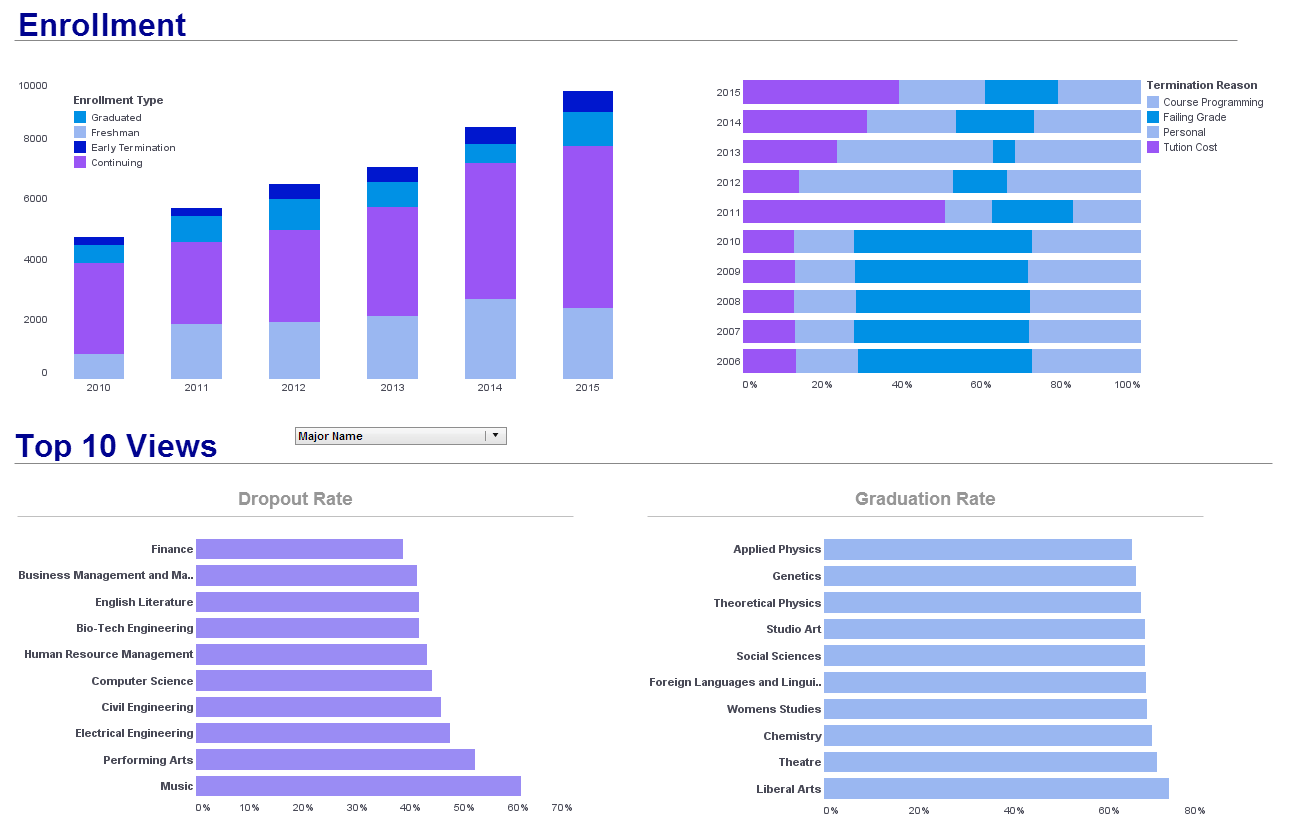Establishing a Business Intelligence Competency Center (BICC)
Below is the continuation of the transcript of a Webinar hosted by InetSoft on the topic of Business Analytics and Competitive Advantage. The presenter is Mark Flaherty, Chief Marketing Officer at InetSoft.
Mark Flaherty (MF): So now let’s look about how we most quickly enable an effective business intelligence solution. We want to step back into understanding what some of the best practices are for BI strategy. Outside of the fact that we need to have a very well defined and articulated BI strategy, we mentioned before that you need to have a high level executive sponsor. And you need to then use that sponsor to help your organization put an infrastructure in place to enable enterprise wide BI.
The typical approach to really establish that is to look into or to establish a business intelligence competency center. So today we’ll discuss several different models as there is no one model that is right for every organization or single organization. Each organization is different, and they will have to take a slightly different approach or a combination approach to how they establish a BICC or a business intelligence competency center.
| #1 Ranking: Read how InetSoft was rated #1 for user adoption in G2's user survey-based index | Read More |
BICC as an IT Department
So, one, we can see that there is the BICC as an IT department. It is its own group. It’s staffed with its own people, and it reports up to the CIO. There are advantages and disadvantages depending on your organization to that. A Business Intelligence Competency Center (BICC) within an IT department can offer numerous advantages to an organization. Firstly, having a dedicated BICC can enhance data governance and management. By centralizing the responsibility for gathering, analyzing, and disseminating business intelligence (BI) insights, the BICC ensures consistency and accuracy in data usage across the organization. This helps in making informed decisions based on reliable data, thereby improving overall business performance. Additionally, the BICC fosters collaboration between IT professionals, data analysts, and business stakeholders, facilitating a holistic approach to BI initiatives.
A BICC can promote innovation and agility within the organization. By staying abreast of emerging technologies and industry trends, the BICC can recommend and implement advanced BI tools and methodologies to drive competitive advantage. This proactive approach enables the organization to adapt quickly to changing market dynamics and customer preferences, thereby staying ahead of the curve. Furthermore, the BICC serves as a knowledge hub where best practices and lessons learned from BI projects are documented and shared, fostering a culture of continuous improvement and innovation.
There are also some disadvantages associated with having a BICC as part of the IT department. One potential drawback is the risk of siloed thinking and departmental conflicts. If the BICC becomes too entrenched within the IT department, there may be a tendency to prioritize technical considerations over business needs. This can lead to a disconnect between BI initiatives and strategic objectives, hindering the organization's ability to derive meaningful insights from its data. Additionally, the IT-centric focus of the BICC may alienate business users who feel marginalized in the decision-making process, resulting in resistance to BI initiatives.
Another challenge is the potential for resource constraints and scalability issues. As BI projects become more complex and data volumes grow, the demands on the BICC's resources may exceed its capacity. This can lead to delays in project delivery, increased costs, and decreased ROI. Moreover, if the BICC lacks sufficient expertise in specialized areas such as data science or predictive analytics, the organization may struggle to fully leverage its data assets for strategic advantage. Therefore, it's essential for the BICC to strike a balance between technical proficiency and business acumen to effectively meet the organization's BI needs.
 |
Read how InetSoft saves money and resources with deployment flexibility. |
The Virtual BICC
Another one is a virtual BICC. This is where you have a representative within each business unit or in each line of business that is responsible for some business intelligence function that makes up a virtual team within an organization. Or we could have BICC as its own operations group because it tends to go across business operations as well as IT, so sometimes it makes more sense to have it there.
Or the last model is a distributed model with the BICC established within corporate, and then they have distribution throughout each of the divisions. And again, each of these models have their pluses and minuses or positives and negatives. One thing I will say is if you are fairly mature and have a need across the enterprise to establish your BI visibility and sharing of information, the virtual BICCs are sometimes a challenge because you have someone, a resource that is devoting some percentage of their time to this, and it’s difficult to get the focus that you need to really get that push across the enterprise. But again, if you are at a lower maturity level, this might be a perfect thing for you if you don’t have the funding to establish a separate BICC.
| Previous: Settting a Business Intelligence Strategy |
Next: What is a BICC?
|
